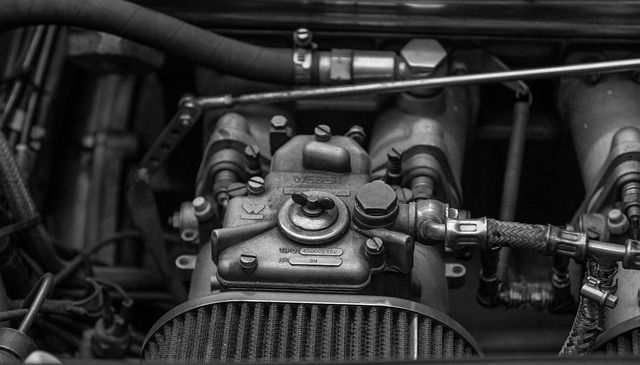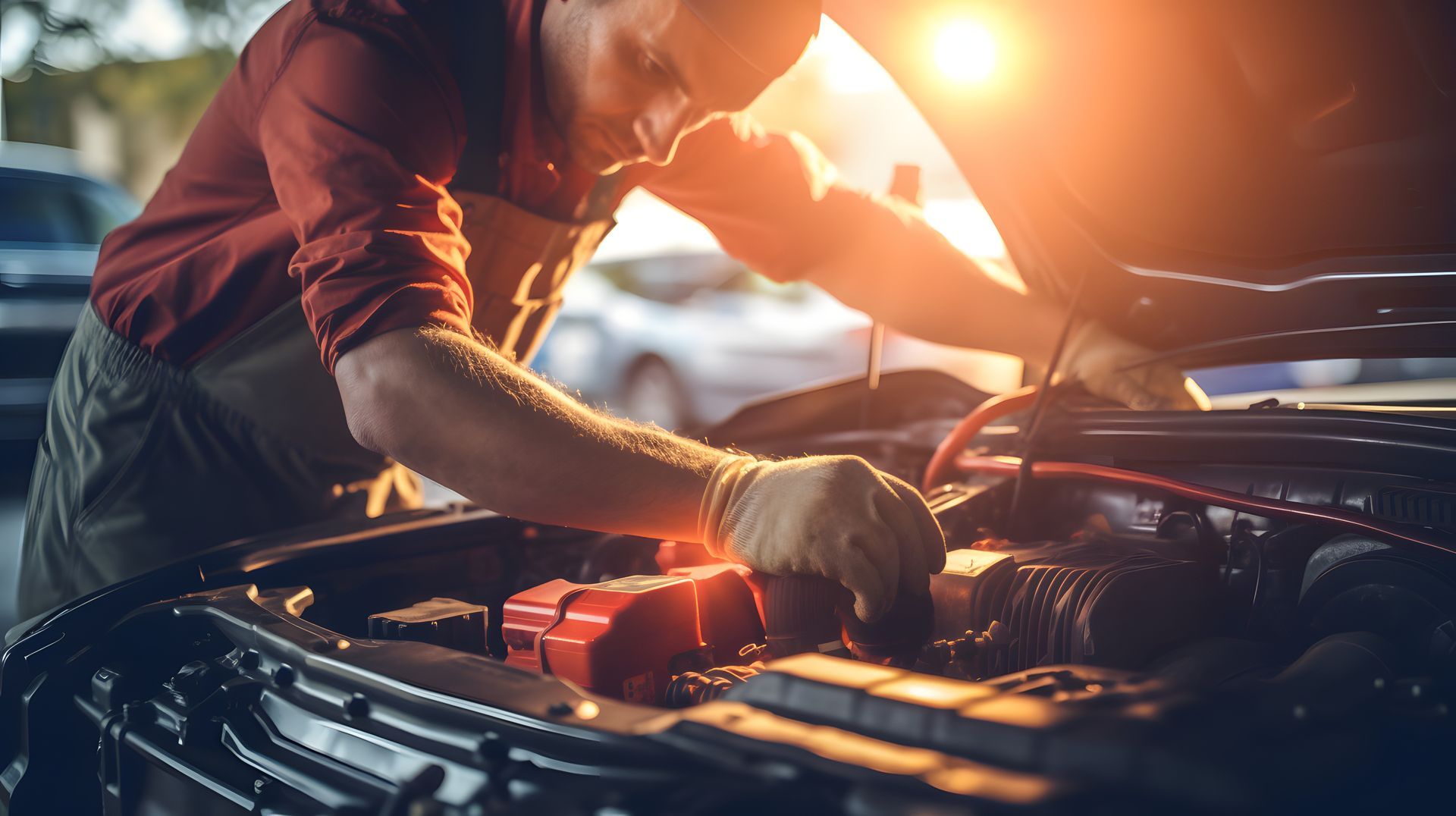Car Electrical Problems
Car Electrical Problems - Modern vehicles are heavily reliant on a complex network of electrical components that power everything from the alternator, starter, and battery to sensors, mirrors, and even seat heaters in many newer vehicles.
In this article we cover the most common car and truck electrical problems, how to spot them, common causes, and what needs to be done to get your car or truck back out on the road.
Some vehicle electrical problems are as simple as swapping out a turn signal bulb or car battery. Other electrical issues are more serious and require a professional diagnostic assessment and can be quite expensive.
But whatever you do, if you suspect your car or truck is experiencing problems with its electrical system, don’t wait. Get your vehicle in to a professional mechanic as soon as you can.
Otherwise your car might leave you stranded on the side of the road.
If you want your equipment to take care of you – take care it.
Understanding Your Vehicle’s Electrical System
The first thing to know is that in most modern cars and trucks your vehicle's electrical system is a sophisticated network that requires specialized diagnostic equipment to troubleshoot problems.
Each vehicle's electrical system is unique, with nuances based on its age, make, and model.
Troubleshooting these electrical components often requires advanced diagnostic technology and the expertise of experienced technicians to effectively diagnose and repair complex car electrical issues.
Modern mechanics are trained how to operate complex diagnostic equipment and make repairs to the electrical systems of many different types of vehicles from gas powered, to hybrids, to electrical vehicles.
We do not suggest attempting to make electrical repairs to your car or truck on your own. There are so many systems in modern cars that a seemingly small mistake can cost you thousands of dollars later.
Signs and Symptoms of Electrical Problems
Red flags in your car or truck electrical system may include grinding, clicking, or silence when starting the car, malfunctioning dashboard lights, or dimming headlights at low speeds.
Electrical problems range from dead batteries and worn out alternators to shorts in the ignition system and malfunctioning sensors. If you suspect you are having an issues, bring your car to a licensed repair facility as soon as you can.
Not all electrical problems are going to leave you stranded on the side of the road immediately, but they do tend to have that impact at some point.
Don’t let a small electrical problem turn into a major repair by waiting until your car dies to get it repaired.
Diagnosing and Repairing Batteries of Connectors
To accurately diagnose and repair electrical issues, an experienced technician will conduct a specialized diagnostic on your vehicle's electrical system.
This includes inspecting the car's battery, assessing its case condition and integrity, and verifying its power output. If the battery's integrity is compromised, it should be replaced.
Regular servicing ensures that the battery, adjoining cables, and sensitive electronics are functioning properly.
What Are The Most Common Auto Electrical Problems
- Dead Battery
- Faulty Alternator
- Bad Spark Plugs
- Malfunctioning Ignition Coils
- Wiring Problems
- Blown Fuses
- Faulty Starter Motor
- Engine Control Module Failure
- Headlight or Taillight Issues
- Burning Smells
1. Dead Battery
A dead battery is one of the most common car electrical issues. Symptoms include dim headlights, the engine failing to start, or a warning light displayed on the dashboard.
Causes can range from the battery reaching the end of its lifespan (typically 3–5 years) to accidentally leaving lights or electronics on when the engine is off.
Extreme temperatures and loose connections can also drain the battery. To resolve this, jump-starting or replacing the battery may be required, depending on its condition.
Preventive measures include avoiding excessive strain on the battery, regular cleaning of terminals, and ensuring the battery is properly secured.
2. Faulty Alternator
A failing alternator prevents the battery from charging, leading to widespread electrical issues.
Symptoms include dimming or flickering lights, electrical component failures, and a burning rubber smell from under the hood. A dead battery is also a secondary effect of a bad alternator.
Causes are typically due to worn-out bearings, damaged belts, or overheating of the alternator’s components.
Professional testing can confirm the problem, requiring alternator repair or replacement.
Preventive steps include routine maintenance of belts and bearings as well as avoiding overburdening the electrical system with aftermarket additions like auxiliary lights or high-powered audio systems.
3. Bad Spark Plugs
Spark plugs play a crucial role in igniting the air-fuel mixture to power the engine. When spark plugs malfunction, you may experience rough idling, reduced fuel efficiency, or even the engine failing to start. Worn-out plugs or corrosion are common causes of this issue.
Replacing old spark plugs at manufacturer-recommended intervals is essential to maintain engine performance.
Preventive maintenance, such as addressing oil leaks or excessive carbon build-up, can help keep spark plugs in good condition.
Regular inspections enable timely replacements, ensuring smoother starts and improved fuel economy while preventing potential damage to ignition coils or the catalytic converter.
4. Malfunctioning Ignition Coils
Ignition coils transform the battery’s voltage into the energy required to ignite spark plugs. Symptoms of faulty coils include engine misfires, stalling, difficulty starting, or reduced gas mileage.
Common causes include exposure to excessive heat, vibrations, or failing spark plugs, which create additional stress on the coils.
A professional mechanic can diagnose and replace damaged coils, restoring the vehicle’s performance.
To prevent ignition coil failure, follow the vehicle manufacturer’s maintenance schedule for ignition system components, including spark plugs.
Keeping the engine clean and free of oil or coolant leaks can also reduce heat exposure and prolong the coils’ lifespan.
5. Wiring Problems
Wiring problems can disrupt multiple electrical systems, causing flickering lights, drained batteries, or complete power loss in specific components.
The complexity of modern vehicles’ wiring creates challenges in identifying the root issue. Causes include corrosion, loose connections, rodent damage, or physical wear over time.
Resolving wiring issues involves professional inspection and repair or replacement of affected wires.
Preventive measures include regular cleaning of connectors, securing exposed wires, and inspecting for damage during routine maintenance.
Garage storage or protective barriers can prevent rodent interference, while prompt repair of small issues, like flickering lights, can stop problems from escalating.
6. Blown Fuses
Fuses act as safeguards for the car’s electrical system, blowing to prevent damage from short circuits or electrical overloads. When a fuse blows, related systems such as the radio, wipers, or power windows stop functioning.
The cause often lies in excessive current flow due to faulty wiring or component malfunctions. Replacing the blown fuse is typically straightforward but requires using one with the correct amperage.
Recurrent fuse problems may indicate deeper electrical issues, requiring a professional mechanic to investigate. To reduce risks, avoid overloading circuits and follow proper installation practices for any aftermarket or replacement electrical components.
7. Faulty Starter Motor
The starter motor is responsible for cranking the engine when the ignition key is turned. A faulty starter presents symptoms like clicking noises during ignition or the complete failure of the engine to turn over.
Causes often include internal wear, corrosion, poor battery performance, or electrical issues with the ignition switch. Repairing or replacing the starter motor is necessary when testing reveals abnormalities.
Preventive care involves keeping the battery terminals clean and ensuring a reliable battery supply.
Avoiding frequent stop-and-go driving and promptly addressing any electrical warning signs improves the starter motor’s longevity and reliability.
8. Engine Control Module Failure
The engine control module (ECM) serves as the vehicle’s brain, managing critical engine functions. ECM failure results in the car refusing to start, poor engine performance, or frequent stalling. “Check Engine” lights and irregular diagnostic trouble codes may also indicate problems.
Causes of ECM failure include electrical surges, moisture exposure, or manufacturing defects. Repairing an ECM often requires advanced diagnostics and reprogramming or replacement.
While ECM failure is unpredictable, preventive strategies include ensuring proper sealing of the engine bay to avoid water damage and addressing unresolved electrical issues, reducing the risk of surges damaging the ECM.
9. Headlight or Taillight Issues
Malfunctioning headlights or taillights can result in dim lighting, flickering, or complete failure to illuminate. Common causes are burned-out bulbs, wiring problems, or failing switches.
Replacing burned-out bulbs is a straightforward fix, but wiring repairs may require professional diagnostics. If faulty wiring is the cause, addressing it promptly is critical for safety and legal compliance.
To prevent these issues, regularly check light functionality, clean light casings, and avoid prolonged exposure to moisture.
Using quality replacement parts and ensuring all connections are secure further reduces the likelihood of future failures, keeping your vehicle road-safe at all times.
10. Burning Smells
A burning smell in a vehicle signals severe electrical trouble, such as short circuits or overheating components. This is commonly caused by exposed or frayed wires, overloaded circuits, or worn-out components producing excess heat.
Immediate attention is required as the situation could escalate into fires or irreversible damage to the electrical system.
Troubleshooting involves identifying overheating components, inspecting wires, and replacing faulty parts like fuses or connectors.
Preventing such issues entails routine electrical system inspections, ensuring wiring insulation is intact, and addressing minor problems like flickering lights before they worsen. Early intervention ensures safety and protects the system.
Summary - Car Electrical Problems
Maintaining your car’s electrical system is essential for keeping your vehicle reliable and road-ready. Modern cars depend on intricate electrical networks to power critical components like the battery, alternator, and starter.
Neglecting these systems can lead to performance issues or complete vehicle failure.
Recognizing signs like dim headlights, dashboard warnings, or difficulty starting your engine is key to tackling issues early.
Common problems include dead batteries, faulty alternators, and worn spark plugs, often caused by age, wear and tear, or inadequate maintenance.
Wiring issues, blown fuses, and malfunctioning ignition coils are also frequent culprits that require professional attention.
A failing engine control module or starter motor can result in more severe disruptions, while something as simple as burned-out headlights may compromise safety.
Accurate diagnosis and expert repair services are vital for addressing electrical issues effectively. Professional technicians use advanced tools to inspect components, pinpoint faults, and provide tailored solutions. Routine maintenance, like replacing old batteries or cleaning terminals, can prevent many problems before they start.
Choosing the right repair shop ensures reliable service and peace of mind. Trustworthy mechanics not only fix existing issues but also provide preventive care to extend your vehicle’s lifespan. Whether it’s a quick battery replacement or resolving complex wiring problems, expert electrical repair services are designed to keep you safely on the road.
Prioritize regular check-ups and repair quality to maintain your car’s performance and avoid costly breakdowns.
Reliable solutions begin with proactive care and skilled professionals.
Expert Auto Electrical Repair Services
For expert diagnostic services addressing car electrical problems, trust professionals to identify the issue and provide top-notch repair services.
The proper functioning of auto electrical systems is vital for the vehicle's performance, influencing the operation of the car starter, battery, and alternator.
Electrical repair needs vary by vehicle age, make, and model, requiring specialized knowledge and equipment.
Our auto electrical repair services are designed to keep your car running smoothly and safely.






